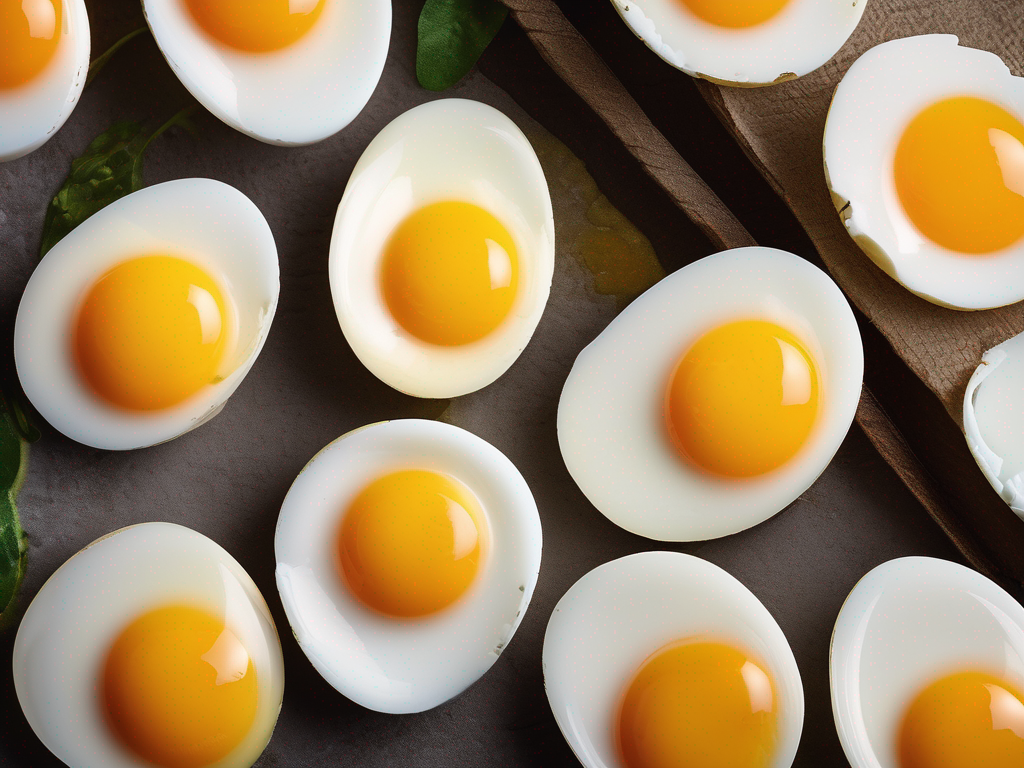
How to Prevent Mold Growth on Stored Cooked Egg Yolks
Get Your Free Food Safety Cheat Sheet
30 most common foods with instant answers. Print it and stick it on your fridge—completely free!
How to Prevent Mold Growth on Stored Cooked Egg Yolks
Cooked egg yolks are a versatile ingredient used in various dishes, from salads to sauces. However, improper storage can lead to mold growth, affecting the flavor and safety of the yolks. In this blog post, we will discuss preventive measures to ensure your cooked egg yolks remain mold-free and safe for consumption. (Cooked egg yolks)
Understanding Mold Growth on Cooked Egg Yolks
Mold is a type of fungus that thrives in warm, moist environments. When stored improperly, cooked egg yolks can provide an ideal breeding ground for mold spores. Mold not only alters the taste and texture of the yolks but can also produce harmful toxins that pose health risks if ingested.
Factors Contributing to Mold Growth:
- Moisture: Excess moisture in cooked egg yolks can accelerate mold growth.
- Temperature: Warm temperatures promote mold development.
- Air Exposure: Contact with air can introduce mold spores to the yolks.
- Contaminated Utensils: Using unclean utensils during preparation or storage can introduce mold spores.
Tips for Preventing Mold Growth on Cooked Egg Yolks
Follow these practical tips to ensure your cooked egg yolks stay mold-free and safe for consumption:
1. Proper Storage Techniques
- Store cooked egg yolks in an airtight container to prevent air exposure.
- Keep the container in the refrigerator at a temperature below 40°F (4°C).
- Use moisture-absorbing packets to reduce excess moisture in the container.
2. Handling and Preparation
- Use clean utensils and hands when handling cooked egg yolks.
- Avoid cross-contamination by storing cooked egg yolks away from raw eggs or other perishable foods.
- Consume cooked egg yolks within 3-4 days of preparation to minimize the risk of mold growth.
3. Freezing Cooked Egg Yolks
- If you do not plan to consume the cooked egg yolks within a few days, consider freezing them.
- Portion the yolks into small freezer-safe bags or containers to facilitate thawing.
- Label the containers with the date of freezing for easy tracking.
4. Inspecting Cooked Egg Yolks
- Before using stored cooked egg yolks, inspect them for any signs of mold growth, such as discoloration or fuzzy spots.
- If mold is present, discard the yolks immediately to prevent contamination of other foods.
5. Reheating Cooked Egg Yolks
- When reheating cooked egg yolks, ensure they reach an internal temperature of 165°F (74°C) to kill any potential mold spores.
- Use a food thermometer to verify the temperature and avoid overheating.
Conclusion
Proper storage and handling practices are essential to prevent mold growth on stored cooked egg yolks. By following the tips outlined in this blog post, you can maintain the quality and safety of your cooked egg yolks for longer periods. Remember that mold-contaminated food should always be discarded to avoid potential health risks. Visit our [cooked egg yolks](/food/cooked egg yolks) page for more information on safe food handling practices.
Remember, when it comes to food safety, prevention is key. Stay informed, stay safe, and enjoy your culinary creations without any worries of mold contamination. (Cooked egg yolks)
Related Posts
Here are some other articles you might find helpful:
Authoritative Food Safety References
These agencies and university labs inform every tip and health precaution we publish.
USDA FoodKeeper – Cold Storage Guidelines
Official refrigerator, freezer, and pantry timelines maintained by the U.S. Department of Agriculture.
Visit USDA FoodKeeperFDA Produce Safety Rule & Grower Guidance
Field-to-fridge handling practices that prevent contamination of fruits, vegetables, and leafy greens.
Visit FDA Produce SafetyCDC Foodborne Illness Prevention Hub
Surveillance-backed guidance on pathogens, symptoms, and steps to reduce foodborne illness risk.
Visit CDC Food SafetyUC Davis Postharvest Technology Center
University research detailing optimal storage atmospheres for produce after harvest.
Visit UC Davis PostharvestPenn State Extension – Home Food Preservation & Safety
Peer-reviewed extension bulletins on safe canning, chilling, and reheating practices.
Visit Penn State ExtensionGet Your Free Food Safety Cheat Sheet
30 most common foods with instant answers. Print it and stick it on your fridge—completely free! Want more? Upgrade to the complete guide with 70+ foods.
Scan your food directly and get instant safety info using our AI-powered camera feature.